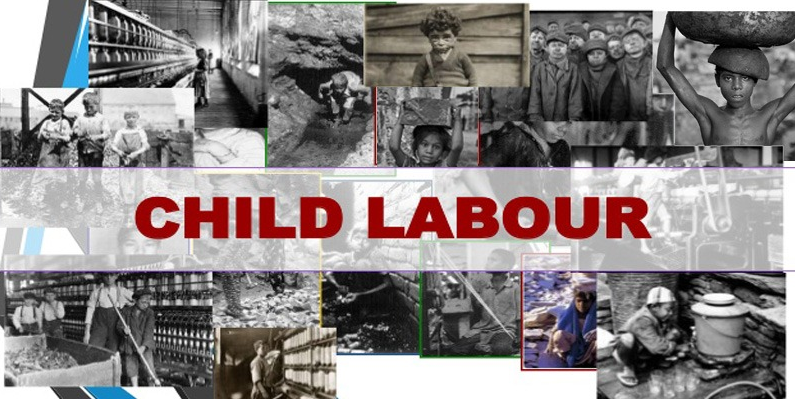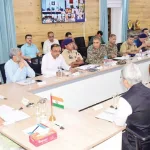Who does not seek the best for his/ her children? Not all but most parents day in, day out go all out to see their children on the road to success. Wise and more affectionate parents do not walk away from gifting a dose of guidance, support and motivation to their children regardless of the latter’s position. Why so? Needless to say for the welfare and happiness of their children.
Observing Children’s day every year underscores beyond a shadow of doubt the colossal importance that children merit in our life. But do we put words into action and eschew the violation of human rights with respect to children in real life situations? If a teacher provides a healthy classroom to children at school, this is upholding of their human rights. And the honest observation of Children’s day in essence!
Observed across India on 14 November every year on the birthday of the First Prime Minister of Independent India Pundit Jawaharlal Nehru — famed for his fondness of children — the red letter day ostensibly provides education about the rights and welfare of children. The day witnesses a myriad of educational and motivational programs held around India in honor of children.
The government of Jammu and Kashmir deserves appreciation for arranging various activities on the day — educational institutions included. However, there is more than that meets the eye about children, our future. The sight of child labor is a painful scenario visible everywhere with deep roots; a moral indictment on society. Found more or less the world over, child labour in Jammu and Kashmir calls for the rigorous application of the law book and — social disapproval.
Despite the existence of many legislative pieces against child labor, the number of children working as laborers in various sectors is a pathetic reality across the UT. Though the menace is largely seen as an offence, it seems that we, as one people, are yet not prepared to ditch it in its multiple practical forms.
Hundreds of minor children can be seen doing manual labor in Dhabas, restaurants, railway stations; working as drivers/ conductors and construction workers; pruning apple trees, picking apple fruit , carrying apple boxes and doing other hazardous tasks for —a few rupees. All of us every day encounter child workers; many are seen begging — mostly girls. Recently, this columnist came across a girl child begging bare-footed and scanty clothed. Her plight is symptomatic of a deep seated moral bankruptcy.
It is a reprehensible act to see the childhood and innocence of children tossed out of the window when they are sent to work. Educated and wealthy members of society — whose apparent commitment to charity gains wide currency — regularly overlook the exploitation of these little children, though it comes to pass every single day before their eyes.
According to the United Nations figures, there are an estimated 152 million children in child labor; 72 million among them are in hazardous work. In the least developed countries, more than one in four children (ages 5-17) are engaged in labor seen as detrimental to their health and development. Africa ranks highest among regions of the number of children in child labor with the figures standing at 72 million. Asia and the pacific ranks second highest – 7% of all children and 62 million in total are in child labor in the region. Together, Asia, Africa and the Pacific regions contribute nine out of ten children for child labor worldwide.
The remaining number is provided by America (11 million), Europe and central Asia (6 million) and the Arab states (1 million). In terms of percentage, 5 % children account for child labor in America, 4 % in Europe and Central Asia and 3 % in the Arab states. The 2011 census counted 250103 child laborers in the UT of Jammu and Kashmir. If the study on the number of orphans here involved in menial jobs is not wrong, then 43% of the child population of 26,53,422 i.e., 11,40,971 children are working in J&K which is far more than the figure of 1,75,630 child laborers of census 2001.
According to a report on child labor in J&K, there are more than one lakh child laborers here, most of whom work in the handcraft sector, automobile workshops, brick kilns, in agriculture and as domestic servants in homes ; thousands of children here are seen working as vendors, bus conductors and auto drivers.
Arguably, it is extreme poverty— in the majority of cases— which pushes children into the bottomless pit of child labor, eating their health and snatching their right to education. And even if they continue education while working, these children fail to attend schools punctually and regularly. Parents cite various reasons for sending their children for doing labor. The reasons range from poverty, acquisition of skills, and lack of quality education down to the inaccessibility of schools. While these are valid and sound reasons for parents to see their children working when they should be at school, it is noteworthy that the parents cannot scapegoat the education, health and happiness of their child laborers for a few rupees: as parents, it is their obligation and moral responsibility to look after their children well and ensure that they do not imprison themselves in illiteracy or miss schooling.
Children can be engaged in doing tasks which are not harmful to them but forcing them to do hazardous work at the cost of their physical, mental and moral health is against the principles of child care and human rights.
Many child laborers have suffered serious injuries: recently, a minor child laborer fell off an apple tree while picking apples; he broke his left arm and had a serious knee injury. Consequently, he lost both education and days of playing (which is essential for his psychological and physical development).Though no child would be happy to work as a laborer, it is the abject financial position, backwardness and low educational awareness of people in an area which have pushed children towards labour.
Preventing child labor —that is stopping minor children from hazardous work —is possible if both the society and UT work together. But if they address it separately, we will end up in chaos. The government can launch child welfare schemes and rehabilitate child laborers; otherwise, the result can prove devastating, considering the fact that the apathy is likely to encourage and explode child labor.
Parents, teachers and preachers can play a key role in combating child labor; they can take care of a child’s health and education. Turning a blind eye to child labor is an invitation to bleak future: the labour preys on the education and future of child workers.
The persistence of child labour and child exploitation is a moral issue. Lofty commitments to goodness and charity is bound to end up unproductive. People do not think that exploiting children is immoral. This is why we do not raise our voices or punish the perpetrators for exploiting children in the name of child labour.
Simply condemning child labour can never be a working solution. Let us pledge on this World Day against Child Labour that we will not look the other way on noticing this evil practice on display. It is expected that the law enforcement and other government institutions will catch the culprits even if wealthy and powerful.
(Author is RK Columnist and Teacher by profession. Feedback: [email protected])








